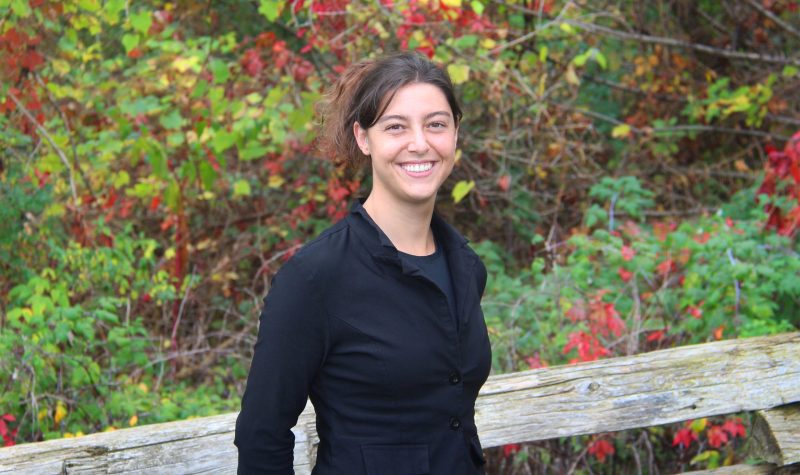L’Organisme de bassin versant de la Yamaska (OBV Yamaska) teamed up with l'Université de Sherbooke (l’UdeS) as part of a PhD project to gather water quality samples from the Yamaska watershed in 2019 and 2020.
OBV Yamaska is a non-profit organization that brings together all stakeholders in the Yamaska watershed, including citizens, agricultural producers, and MRCs, to encourage sustainable water management. It carries our various activities and projects to improve the state of the watershed.
Its collaboration with l’UdeS involved studying emerging contaminants, such as industrial waste, pesticides, and pharmaceuticals, downstream and upstream of some of the municipalities that fall within the watershed.
According to the sample results, there is 75,000 times more emerging contaminants downstream than upstream in certain municipalities even after the water is treated. The results are public and they have been presented to the municipalities.
“All of these municipalities had water treatment plants. (…) It (the watershed) gathers 91 municipalities. Upstream we have Brome Lake, Waterloo, Cowansville and it goes to the St-Lawerence River to Sorel-Tracey. So we go through Granby, Farnham, Acton Vale, Saint-Hyacinthe. It’s quite big,” said Lou Paris, project manager for the OBV Yamaska. Paris has a Bachelors of Science in Biophysics and a Masters of Science in Water.
Paris noted that for this specific project, the OBV and its l’UdeS student collaborator were not studying concentrations of emerging contaminants.
“We were not getting like oh, there’s 5 milligrams per litre of this contaminant. That’s not the type of results we were getting. We were obtaining ratios. So we were able to say, for instance, (…) that were was 75,000 times more emerging contaminants downstream and upstream of certain municipalities,” she clarified. “This is what we were obtaining. We studied pharmaceutical contaminants, industrial contaminants, and pesticides.”
When asked what the difference is between upstream and downstream, Paris said that it essentially means before and after the municipality.
“Let’s take the river Yamaska Nord that goes through Granby. So, upstream of Granby is the Yamaska River before it goes through Granby. There’s Yamaska upstream, then it goes through Granby, and then there’s Yamaska downstream. It’s after the municipality, after the waste water treatment plant of Granby,” she explained.
Paris highlighted some of the results that stood out to the OBV Yamaska.
“Obviously, we were finding so much more pharmaceuticals downstream than upstream of every municipality but especially the ones with hospitals, which is not a surprise. It was the same thing for the industrial contaminants,” she explained. “There was a bit more variability there just because it depends on which industries are present in the municipality. (…) It depends on which industries use which contaminants while the pharmaceuticals are a bit more homogenous amongst the hospitals.”
In regards to pesticides, Paris mentioned that there wasn’t a big difference between upstream and downstream.
“That’s quite logical because the main source is not the municipality it is mostly agricultural activities,” she said.
According to Paris, these results suggest that the wastewater treatment plants are not designed to deal with emerging contaminants.
“The main conclusion is that wastewater treatment plants are made to treat the three ‘Ps:’ paper, pee, and poop. This is what they are made for. They are not made to treat contaminants of emerging concern. They basically go through the treatment without being removed and this is why we find them in the river,” she emphasized.
It can be difficult to determine what sort of impacts these emerging contaminants have Paris said.
“Downstream of every municipality the cocktail of contaminants is different, we call that the ‘cocktail effect.’ It’s very hard to study because every aquatic ecosystem is contaminated by different cocktails of contaminants so the affects will be different,” she explained. “Some contaminants will cancel each other and some will enhance the impacts on the ecosystem. It’s like if you have a bad mix of medicines and you don’t have a pharmacist who will say no, don’t mix these two.”
CIDI reached out to the Town of Cowansville for comment on how the municipality plans on going about improving its wastewater treatment infrastructures. In an email back to CIDI Fanny Poisson, director of communications for the town, said that the municipality "is not giving interviews on the subject because, like the other municipalities, they are waiting for the directives of the Quebec government for this dossier."
To hear more from Paris, listen to the full interview below:


